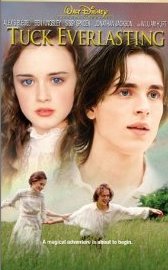
The 2009 SCCTE Conference theme was “Images, Imagination, Innovation.”
I was pleased to have been invited by the SCCTE conference planners to present a half-day post-conference workshop Saturday January 31 on using film in the literature classroom. My aim was to help English teachers (and their students) better appreciate the “languages of film.”
Most of our students view movies (and other media) uncritically: they only know what they see on the screen. They don’t have a clue how it got to the screen: the process. Teaching film literacy, or film fluency, is a way of “pulling back the curtain” on how movies are made. So helping them to understand the languages of film is a perfect way to encourage both critical thinking and critical viewing.
At the start of the presentation, we shared our favorite films and what made the film, or the scene from the film, memorable. The films, and techniques, were posted on the walls.
I referenced the upcoming Academy Awards (February 22) and asked participants to brainstorm the award categories. Those categories and awards recognize the people who use and understand the “languages of film.”
To get teachers accustomed to viewing a film critically, I started with this activity. We started with a (passive) viewing of the opening scene from Steven Spielberg’s “ET-The Extra Terrestrial.” You can find this clip here. (We viewed up to the point where the “mother ship” departs— stranding ET on Earth.) After this initial viewing, I distributed index cards to groups of teachers. Each card listed a different “language of film.” The card was read by each teacher in the group.
We watched the clip a second time, incorporating active viewing–with teachers concentrating on their specific assignment, listed on the card. At the end of the activity, participants compared notes and then a representative from each group shared what they saw/heard with the entire room.




We looked closely at opening credits, symbolism, point-of-view, and lighting in several clips from “To Kill A Mockingbird;” the role of music in “Tuck Everlasting;” the use of images, sounds and symbols in “The Great Gatsby;” and visualizing and storyboarding in “Because of Winn-Dixie.”
Handouts from this workshop:
- Frank Baker’s Media Literacy Clearinghouse homepage
- Frank Baker’s Website Motion Picture/Film Resources
- Linking film to national and state teaching standards
- National Film Study Standards for Middle School (The Story of Movies)
- Film Glossary
- Frank Baker’s Web Site/Film Study Guide “To Kill A Mockingbird”
- TKAM Symbolism Activity
- Discovery United Streaming video “Images, Sounds & Symbols” (from The Great Gatsby)
- The Nuts & Bolts of a Screenplay (Writing Magazine, Feb/Mar 2007)
- Page 1 from the screenplay “To Kill A Mockingbird”
- Blank Storyboard Form
- Media Smart DVD series (McDougal-Littell) includes film clips for analysis
- Focus questions to help students read/write about films more effectively
- Page promoting Summer Media Literacy Conference: Bridging Literacies
- Recommended books on film for school library media centers
- Subscription form to Australian SCREEN EDUCATION magazine
Read what participating teachers said about this workshop.
Consider inviting Frank Baker to your school or district’s next in-service professional development opportunity. For more info, contact him here: Frank Baker
Share This Page:


